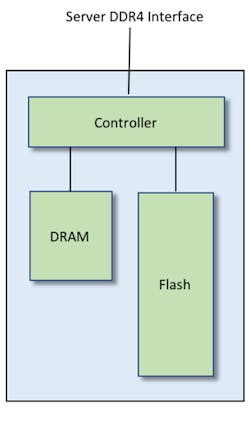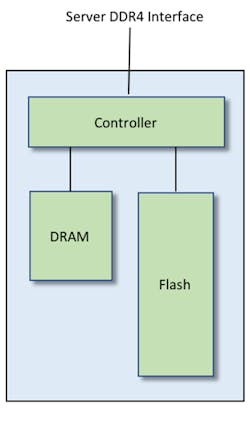MRAM Means New Possibilities for NVDIMMs (.PDF Download)
NVDIMM (non-volatile dual in-line memory module) is a new class of memory designed to allow non-volatile memory to be connected to the DIMM bus traditionally populated by DRAM. Being a new memory, we’re early into its lifecycle, with two variants in production and a third on the way. But proponents of NVDIMM are also in the early days of understanding the diverse ways that they can integrate the technology into their systems. As user ideas proliferate, they will spawn new NVDIMM architectures, further broadening NVDIMM’s application scope.
The newest NVDIMM combines flash memory for storage with a DRAM cache for faster access. While DRAM clearly has extremely broad adoption in computer systems, it’s fraught with management and power challenges. An emerging memory technology, magnetoresistive RAM (MRAM), is simpler to manage than DRAM, is targeted to use less energy, and is itself non-volatile. Replacing the DRAM in an NVDIMM with MRAM in new NVDIMM designs will result in higher performance, lower power, easier management, and new ways of using NVDIMM. It could also inspire new architectures for future versions.
Overviews: NVDIMM and MRAM
There are two existing versions of NVDIMM (with one more in the standardization process):
- NVDIMM-F is the original, and it consists only of flash memory wrapped in a DDR4 interface.
- NVDIMM-N adds the DRAM cache, keeping the DDR4 interface. Reads and writes go through the DRAM, with cache changes being written back to flash per system policy. Because DRAM is volatile, its contents must be stored in the flash when power is shut off or fails. Some form of backup battery is needed to provide the energy for that transfer.
NVDIMM-P is a newer standard being formalized through the JEDEC organization. Intended to accommodate new types of memory, its first configuration will be monolithic, with subsequent variant versions to follow (Fig. 1).
1. A typical NVDIMM-N configuration combines flash and DRAM managed by a controller that moves data between the two during power transitions.

